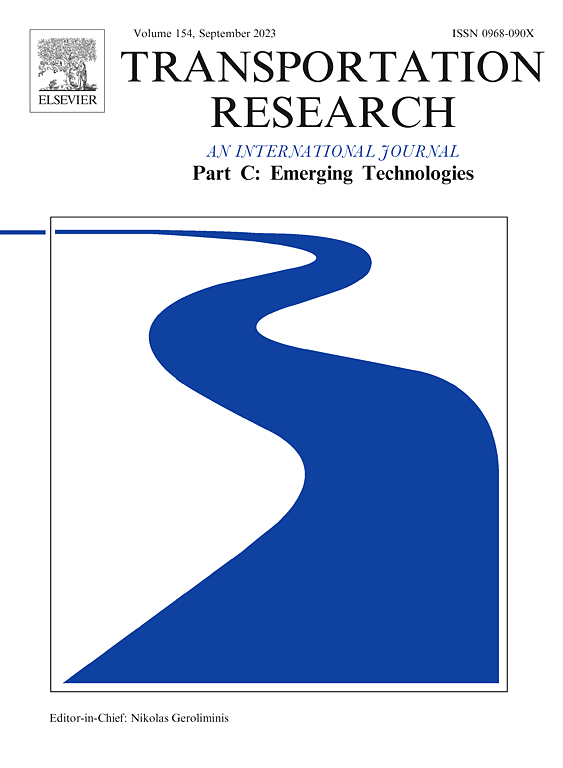Sparse Gaussian process-based strategies for two-layer model predictive control in autonomous vehicle drifting
IF 7.6
1区 工程技术
Q1 TRANSPORTATION SCIENCE & TECHNOLOGY
Transportation Research Part C-Emerging Technologies
Pub Date : 2025-03-19
DOI:10.1016/j.trc.2025.105065
引用次数: 0
Abstract
Vehicle safety is paramount in autonomous driving, particularly when managing vehicles at extreme side-slip angles—a challenge often overlooked by conventional controllers. Recent studies have focused on vehicle drift control under such extreme conditions. However, tracking complex trajectories while drifting is challenging, especially in the presence of a model mismatch. This paper proposes a two-layer model predictive controller based on sparse variational Gaussian processes. The first layer is responsible for computing the optimal drift equilibrium points, while the second layer is tasked with tracking these points. A variational free energy-based Gaussian process is utilized to compensate for errors in the upper-layer drift equilibrium point calculations and mismatches in the lower-layer controller model. Moreover, the vehicle’s state is determined to be either in transit drift or deep drift based on whether the slip angle and steering angle have reached critical values. Gaussian models are established for each state to enhance prediction accuracy. The effectiveness of the controller is demonstrated through joint simulations on MATLAB and CarSim platforms. First, the proposed two-layer model predictive controller was compared with three state-of-the-art drift controllers, demonstrating at least a 48.64% reduction in average lateral error when tracking trajectories with varying curvature. Second, when combined with sparse Gaussian processes, the controller’s learning ability was validated in scenarios with a 5% to 20% friction coefficient mismatch. Specifically, in the scenario with a 20% friction coefficient mismatch, its average lateral error was reduced by 95.09% after model error learning. Additionally, the controller was compared with both Fully Independent Training Conditional (FITC) GP-based MPC and Full GP-based MPC controllers, demonstrating better trajectory tracking capability and model error learning ability.
求助全文
约1分钟内获得全文
求助全文
来源期刊
CiteScore
15.80
自引率
12.00%
发文量
332
审稿时长
64 days
期刊介绍:
Transportation Research: Part C (TR_C) is dedicated to showcasing high-quality, scholarly research that delves into the development, applications, and implications of transportation systems and emerging technologies. Our focus lies not solely on individual technologies, but rather on their broader implications for the planning, design, operation, control, maintenance, and rehabilitation of transportation systems, services, and components. In essence, the intellectual core of the journal revolves around the transportation aspect rather than the technology itself. We actively encourage the integration of quantitative methods from diverse fields such as operations research, control systems, complex networks, computer science, and artificial intelligence. Join us in exploring the intersection of transportation systems and emerging technologies to drive innovation and progress in the field.

 求助内容:
求助内容: 应助结果提醒方式:
应助结果提醒方式:


